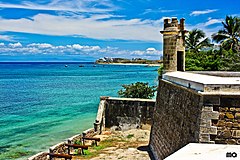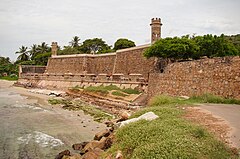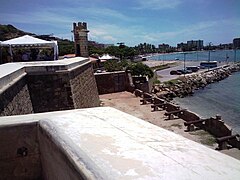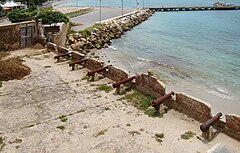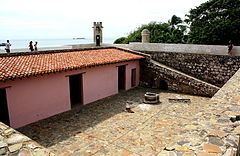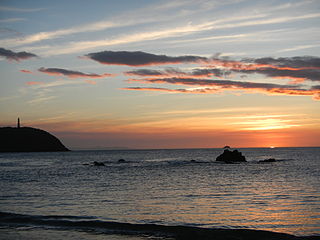
The Nueva Esparta State is one of the 23 states of Venezuela. It comprises Margarita Island, Coche, and the lightly inhabited Cubagua.
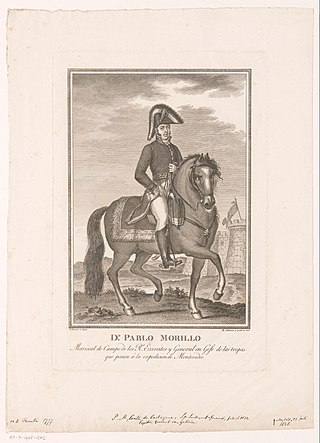
The Spanish reconquest of New Granada in 1815–1816 was part of the Spanish American wars of independence in South America and Colombian War of Independence. Shortly after the Napoleonic Wars ended, Ferdinand VII, recently restored to the throne in Spain, decided to send military forces to retake most of the northern South American colonies, which had established autonomous juntas and independent states. The Spanish expeditionary army under the command of Lieutenant General Pablo Morillo, with support from loyal colonial troops, completed the reconquest of New Granada by taking Bogotá on 6 May 1816.

Margarita Island is the largest island in the Venezuelan state of Nueva Esparta, situated off the north west coast of the country, in the Sea. The capital city of Nueva Esparta, La Asunción, is located on the island.

La Asunción is a city in Venezuela. The capital of Nueva Esparta state, it lies on Margarita Island in the Caribbean Sea, off the South American mainland. It is situated in a fertile valley surrounded by green hills, 6 miles (10 km) inland from the port of Porlamar, where a cooler climate exists. The city was founded in 1565 by Captain Pedro González Cervantes de Albornoz. It has an imposing backdrop of Santa Rosa Castle, also known as the Santa Rosa Fort, which was built to protect the city. The most important structures in the city are built around the Plaza Bolívar. The Catedral Nuestra Señora de La Asunción, dated to the 16th century, is one of the earliest churches in the country. According to the 2011 census, it has a population of 28,513 people.
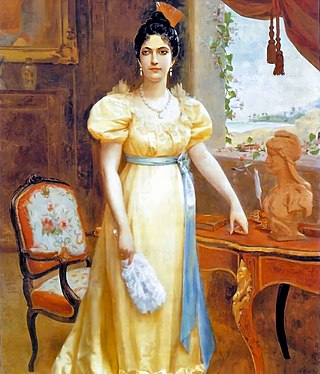
Luisa Cáceres Díaz de Arismendi was a heroine of the Venezuelan War of Independence.
The anthem for the Nueva Esparta State, Venezuela, was written by Miguel Ángel Mata Silva; and composed by Benigno Rodríguez Bruzual.

Pampatar is a city on Isla Margarita, Nueva Esparta State, Venezuela. It is located in the Maneiro Municipality.

Pablo Morillo y Morillo, Count of Cartagena and Marquess of La Puerta, a.k.a. El Pacificador was a Spanish military officer who fought in the Napoleonic Wars and in the Spanish American Independence Wars. He fought against French forces in the Peninsular War, where he gained fame and rose to the rank of Field Marshall for his valiant actions. After the restoration of the Spanish Monarchy, Morillo, then regarded as one of the Spanish Army's most prestigious officers, was named by King Ferdinand VIII as commander-in-chief of the Expeditionary Army of Costa Firme with the goal to restore absolutism in Spain's possessions in the Americas.

Arismendi is a Basque surname, formed from aritz (oak) + mendi (mountain), and thus meaning "mountain of oaks". The Basque people are indigenous to the area of northeast Spain and southwest France, a historical region known as the Basque Country.

The Castillo San Felipe de Barajas is a fortress in the city of Cartagena, Colombia. The castle was built in 1639 and is located on the Hill of San Lázaro in a strategic location, dominating approaches to the city by land or sea. It was originally known as the Castillo de San Lázaro. It was built by African slave labor under Spanish supervision during the colonial era. The fortress was involved in several battles between the late 17th to early 19th centuries between European powers.
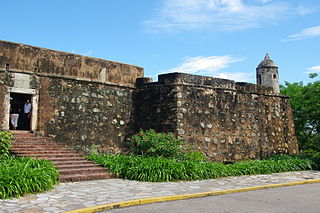
Santa Rosa de la Eminencia castle is a colonial castle built in the seventeenth century by the Spanish monarchy on Margarita Island, Venezuela. After a group of French pirates attacked the city of La Asunción, its construction started on 24 March 1677, by order of governor Juan Muñoz de Gadea, and it was finished c. 1683.
El amor las vuelve locas is a Venezuelan telenovela produced by Venevisión in 2005. The series is a remake of the telenovela Contra viento y marea written by Leonardo Padrón, and this new version was adapted by Alberto Gómez. The telenovela lasted for 151 episodes and was distributed internationally by Venevisión International.

Francisco Esteban Gómez was a Venezuelan military officer who was active in the Venezuelan War of Independence. Known as the “patriot commander” of Margarita Island, he was noted for his participation in the defense of the island against invading Spanish forces. In particular, he is honored today as the hero of the Battle of Matasiete (1817).
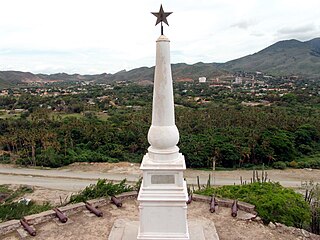
The Battle of Matasiete was a battle in the Venezuelan War of Independence that took place on 31 July 1817 near the city of La Asunción on Isla Margarita in Venezuela. It was fought between pro-independence Republican revolutionaries led by Francisco Esteban Gómez and Spanish Royalist forces under the command of Pablo Morillo. The outcome was a Spanish defeat.
Juan Muñoz de Gadea was a Spanish soldier who served in Peru, Chile, Mexico and the Philippines. He was appointed Governor of Margarita in 1676.
Juan Fermín de Huidobro was a Spanish military engineer who was Governor of Margarita Province, in what is now Venezuela, between 1681 and 1683.

San Carlos de la Barra Fortress is a 17th-century star fort protecting Lake Maracaibo in Venezuela.
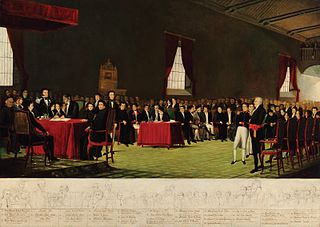
The Venezuelan independence was the juridical-political process that put an end to the ties between the Captaincy General of Venezuela and the Spanish Empire. It also implied the replacement of the absolute monarchy by the republic as the form of government in Venezuela.
The Battle of Clarines took place during the Venezuelan War of Independence. Royalist forces attacked a north-bound force from the Third Republic of Venezuela near the town of Clarines. The outnumbered and poorly armed Royalists secured a victory against the Patriot rebels.

The siege of Cartagena (1815) was a successful 105-day Spanish siege by combined naval and ground forces under command of General Pablo Morillo, of the Colombian city and fortress of Cartagena de Indias, defended by Republican forces under the leadership of Manuel del Castillo y Rada and José Francisco Bermúdez, between August and December 1815.



